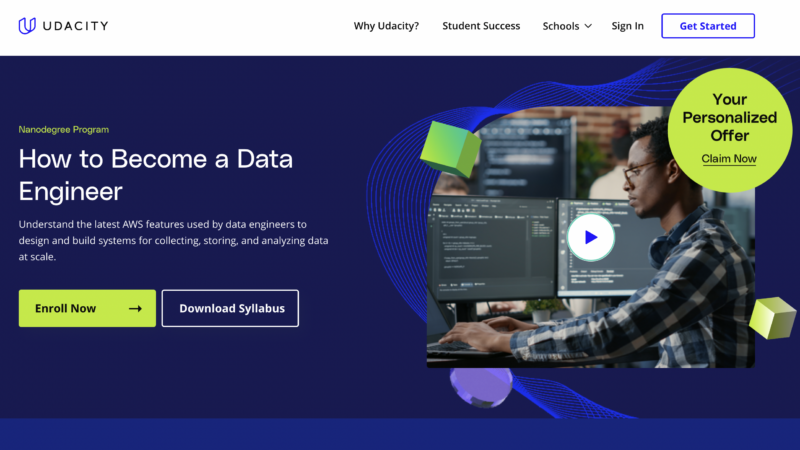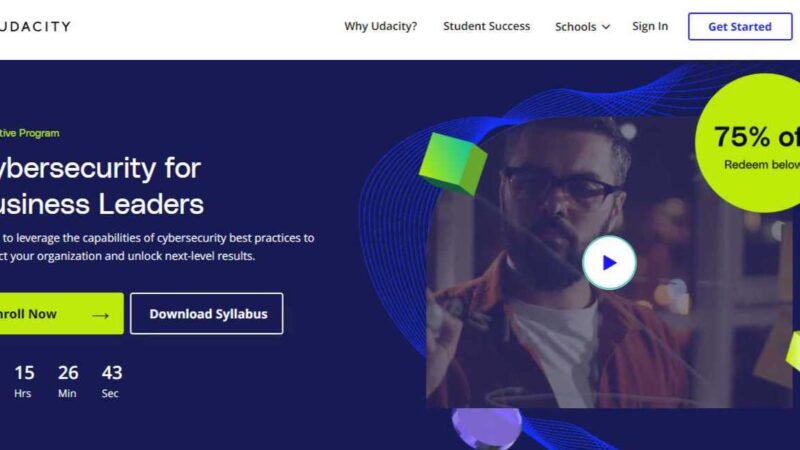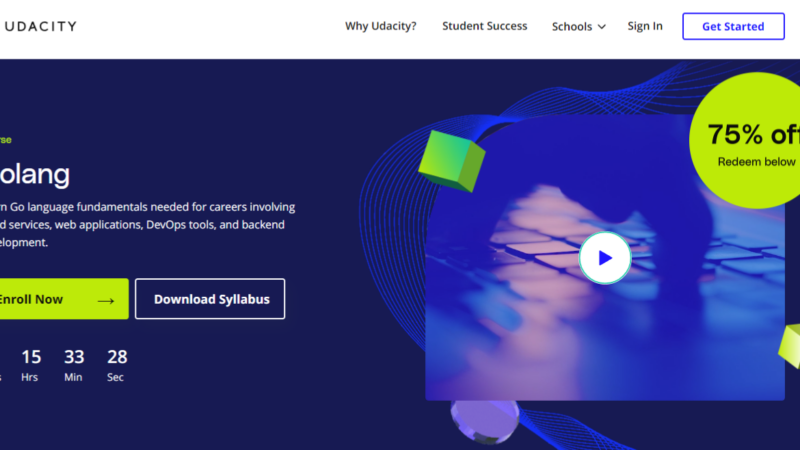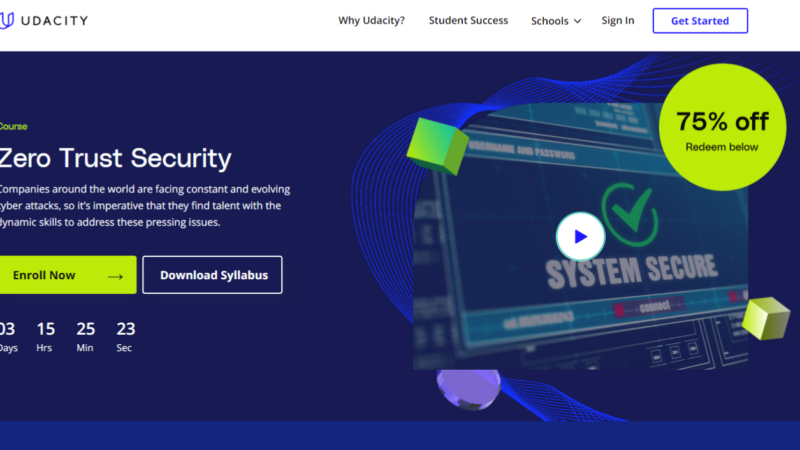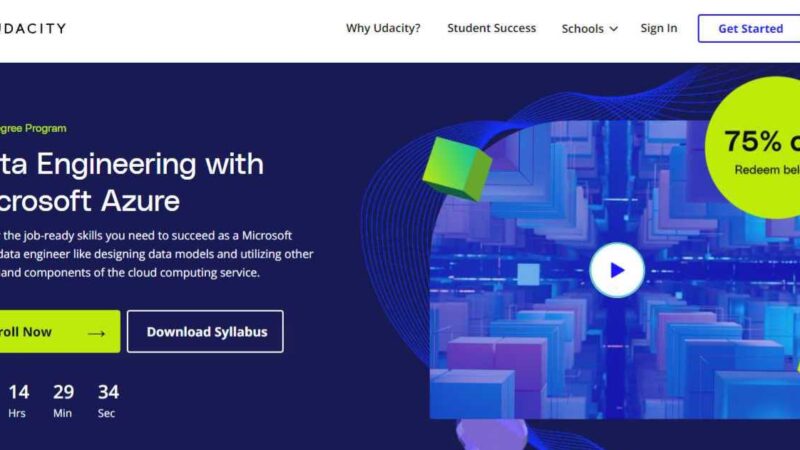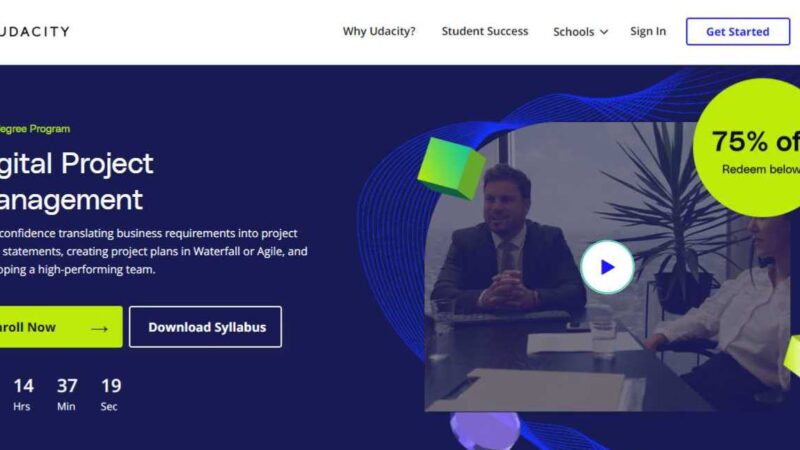Udacity Introduction to Programming Nanodegree Review

Udacity Intro to Programming Nanodegree Review
Programming is a window into a whole wide world of technology. Everything from designing websites to creating applications and intelligent machines starts with code written in the top languages. With a foundation of coding languages, you can start to see how pieces of the larger puzzle work together to create advanced and complex technologies. If this sounds exciting to you but you are not sure where to start, come on along. With Udacity’s Introduction to Programming Nanodegree, you’ll be on your way to creating cool stuff in no time! You can choose your path after this course, knowing that you have the basics to go into everything from development and beyond.
About Udacity
Udacity is an online academy that has been in the game for more than ten years. Throughout their time, they went from a humble online community geared toward educating anxious learners to a full-blown online academy with certifications and online lectures. They have teamed up with companies in the industry to create courses and projects that give learners real-world projects that tackle real industry issues. On top of teaming up with top-tier companies in the creation of courses, they have also worked with many of them to get graduates employed. Perhaps the most noteworthy creation from the academy is their nanodegrees, which come with a long list of extras that make them stand out in the crowd.
What’s a Nanodegree?
A nanodegree is a short course that comes with a certification. These are meant to take only a few months to complete, depending on the content. These range from introductory topics in IT to advanced subjects. Nanodegrees from Udacity are designed to go in-depth about a particular topic, leading learners along as they make their way to the end and on to the job market. Each nanodegree comes with a few extras which include:
- A technical mentor
- A community of learners
- Career services including resume clean-up and mock interviews
- A database crawling with recruiters
- Real-world projects that mimic real industry issues
- A-list instructors
Meet your Instructors
Speaking of instructors, we’d like to introduce you to the instructors for this course! Lessons are led by:
Karl Kreuger
Karl worked for industry giants Google before joining the Udacity team. He speaks about his experience working with a top-tier company as a Site Reliability Engineer (SRE) for one of the busiest websites in the world, using real examples within his career to lead learners through some of the more advanced topics. He makes sure that learners have a good grasp on topics, explaining things in an easy to follow way.
Kelly Howard
Kelly is the leader of Web Development Programs at Udacity. She has industry experience and a passion for teaching, using them both to shine in her video lectures.
Julia Van Cleve
Julia used to be a math teacher at a California middle school. Her years of teaching experience combined with her work with freelance programming creates a different perspective for learners, helping them to see what kinds of opportunities are out there. Programming is something that is accessible to everyone, no matter what their primary career choice or age.
Abe Feinberg
Abe has worked with both education and psychology. His interests with artificial intelligence (AI) lead him to combine his love for teaching with his love for creating smart machines. It is his goal to optimize education with the help of AI, possibly creating bots that can do things better than humans can.
James Parkes
James has a degree in both computer science and mathematics. He has been an instructor for Udacity for many years, leading learners through many programs in the process. It is his goal to educate, not only those who have the opportunity but those who may not have the means for education.
Richard Kalehoff
Richard is an instructor for several courses with Udacity. His experience is unique in that he started off with a non-profit, getting his hands on a bit of everything. This experience opened up his mind to all the different fields withing programming, teaching learners what and how they can use their new skills.
Course Breakdown
Prerequisites
This is an introductory level program but it does come with its challenges. As far as computer skills, you’ll only need a very basic understanding of their use including opening files and connecting to the internet. You’ll need familiarity with basic algebra and have some reasoning skills. Your computer should be connected with broadband and have enough space for a code/text editor. Besides that, Udacity recommends that learners come motivated and ready to learn. Some of the projects will have deadlines that learners will need to meet.
Lesson One: Intro to HTML
This section is all about HTML. This is one of the most basic programming languages, used several times as a basis for the infrastructures of development. By the time this section is over, you will have written your first line of code!
Lesson Two: Meet CSS
CSS is a language that helps add style to code. You can get a glimpse of how designers create beautiful webpages, learning the ropes of how to use this code to bring life to HTML. You’ll test what you learn, working on your first project of the course.
Project! Design and Animal Trading Card
You will first use HTML to create a structure for your cards. Then, use CSS to spice things up creating a design and style that achieves the look you’re going for. In the end, you will have hands-on experience of how small pieces of code add style to otherwise basic and bland code.
Lesson Three: Meet Python
Python is a powerful language. It has taken machine learning and IT to new heights, giving programmers and developers opportunities to make complex apps and infrastructures. In this section, you’ll learn the basics of the language, learning all of the possibilities that come along with it, including problem-solving and logic checks.
Project! Adventure Game!
Getting to work with a powerful language like Python, you can do cool things like developing games. In this project, you’ll create an adventure game, using Python syntaxes and logic to display your knowledge of code. You’ll input loops, conditions, and functions, using them to create detailed actions within your game.
Lesson Four: Intro to JavaScript
JavaScript is one of the most used languages in programming. It is especially important to application development, helping developers keep up with the fast-paced deployment cycles.
Project! Pixel Art
Can you believe you’ll develop your first application! Well, that’s exactly what you’ll do here, creating an application that is a single-page, that allows you to draw pixel art on a canvas that is 100% customizable. Use your skills and all the languages you learned to help you along the way, creating a beautifully designed app that works like a charm.
How Long Does the Course Take?
Learning four new languages and creating webpages and apps sounds like a whole lot to get through. Udacity estimates that learners can finish the course in 4 months when dedicating 10 hours a week. This is a fair estimate but, not the same for everyone. Some learners can take advantage of Udacity’s self-paced learning cycle, only needing to meet the deadlines for each project. It is possible to finish the course faster, depending on the time that learners have to dedicate to learning each week.
How Much Does the Course Cost?
The cost of the course depends on a few things. One is the time you take and the other is the method you choose to pay. Udacity offers two ways to pay, and choosing the best one depends on how much time you have to dedicate to the course.
Pay as you Go
Paying as you go; you can take as long as you like as long as you meet the project deadlines. This might seem like a sweet deal, especially knowing that you won’t be rushed or pushed for time but, it will cost you. Each month of access, Udacity charged €359. While that might be a great deal for one month, this course is difficult to complete in such a short time.
Take Udacity’s Deal
If you take Udacity’s deal, you can bundle up and save. This is a one-time payment, that takes Udacity’s estimate into account. For four months of access plus a 15% discount, paying this way is €1236. Not too shabby but, also a bit on the pricey side, especially if you can finish in less than four months.
What Learner’s Say
Out of those who have taken the course, the rating is high. Overall, it has a 4.7 out of 5 stars, receiving praise for the content and the instructors. To get a glimpse at what to expect from the perspective of those who have taken the course, here are what a few of the learners had to say:
“This course generally is great! But I want to make something very clear for those who are a novice in programming. It certainly needs a lot of hard works in reading through many information. This includes not only the instructor’s videos and manuals, but also many more links of information from reading through the discussion forum, referred from mentors, posted summary notes, and recorded videos. In my case, I have input a lot of time in it and much more than just 20 hours a week.” Yodit F.
“Udacity’s Intro to Programming Nanodegree (IPND) is an exceptional way to learn how to programming: Pro’s: * Practical approach: real sense that Udacity wants every student to become an employable programmer * Effective: well-thought-out curriculum, which (so far) builds up the student’s confidence with a good mixture of (video) “lecture”, text notes, follow-along examples, and do-it-yourself. Some theory, but focus on practical.” – John M.
“Highly recommended for students new or relatively new to programming. Your computer illiterate <insert older relative here e.g. grandfather or grandmother> could take this course and become better coders than many undergraduates.” James L.
How’s the Job Market?
As a rookie programmer, you might not be in high demand. This course is meant to get you started in the right direction, giving you the freedom to choose in which direction you decide to move. You can use these skills as a foundation to build on, going toward application development, web design, AI, Data Science, and many more. While programming alone is not in such high demand, actually expected to shrink 7%, programmers that have an intermediate to advanced level of skills including JavaScript are through the roof.
Java is one of the most used languages, taking the top spot among those used in application development. As we move to a more cloud-based way of doing things, this is a great direction to go, jumping into the market early enough before it gets too overflooded. Python is another language with a lot of opportunities. It is the most used language and helps developers create more advanced problem-solving technologies and gadgets. If you decide to go the route of the opportunities are seemingly endless, as you increase your knowledge in the language and its uses.
Final Thoughts
Udacity is an online academy with a good reputation. Scoring a certification from them, you’ll be part of a team of graduates that are spread out all across the industry. Several learners have gone on to work in some of the best companies out there, using the Udacity name to get them in the door. With the Introduction to Programming Nanodegree, you’ll have a basis of knowledge that you can use to build up your skills and head in the direction to land your dream job.
The course is four sections and, if you dedicate 15 to 20 hours a week, could be finished in as little as three months. You can enjoy the savings and start another course that leads you further in the direction you’re hoping to go. If you’ve been wanting to break into the digital world, now is a better time than ever, and Udacity can help.
